10/06/2024
A ride around the WWII locations in the Forest to commemorate the D-day 80th anniversary
Written by: Daniel Brooke-Lander
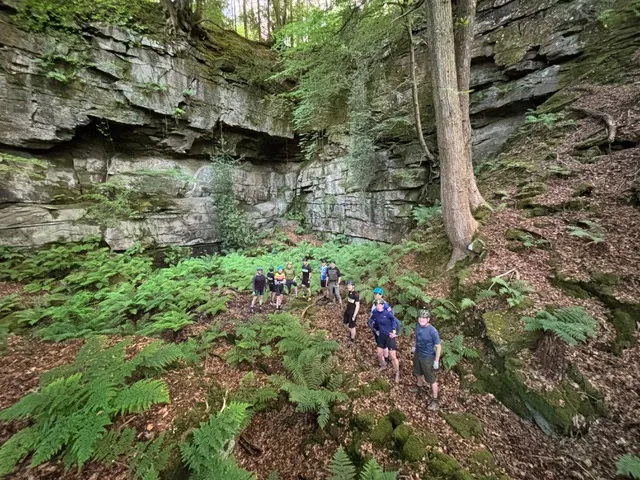
Thursday 6th June 2024 was the 80th anniversary of the D-Day landings. The weekly club gavel ride happened to fall on the same day, and there are numerous wartime monuments in the forest. An idea formed, lets ride out and explore some of them! A post was put on the club Facebook page, and was well received and commented on. The idea had taken.
James Moverley and John Lewis had knowledge of some of the military remains in the forest, so they led the group to the first location, Broadwell camp. The camp was a WWII administration hub built around 1940 and closed in 1958. It was occupied first by the British and then by the Americans. At one time the camp would have consisted of Nissen huts, pre-formed concrete huts, walking paths, and possibly a watchtower. All that remains now is the concrete foundations of about thirty huts, and house bricks scattered around the site. We discussed how the past that we were seeing was not actually that long ago.
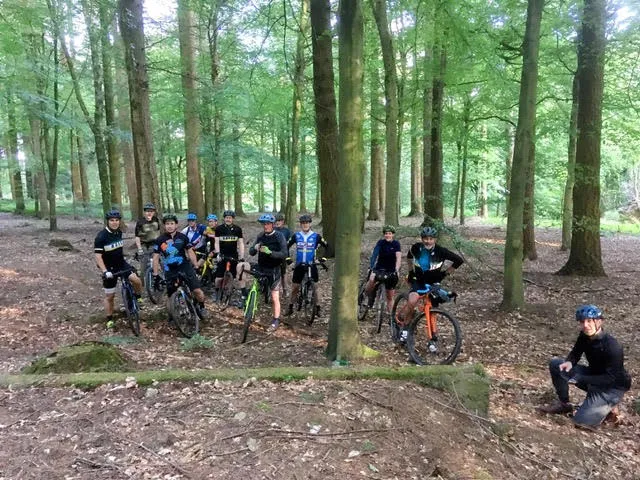
Moving on we rode to the next location, Wimberry shooting range. James led us up a greasy off-camber hill to a mercifully flat area that would have been the shooting range. We all shimmied under a fallen beech tree to discover a target bunker with an intact stone wall, and an unexpected alcove! At the time a solider would have been sent to the bunker and tasked with replacing the paper targets that his mates shot at. The alcove was the place of ultimate safety, and probably a good place for a smoke too! Also waiting to be discovered were two impressive sandstone quarries, both having surprising scale, double-take depth, sheer rock faces, and moss blanketing anything that it could cling to.
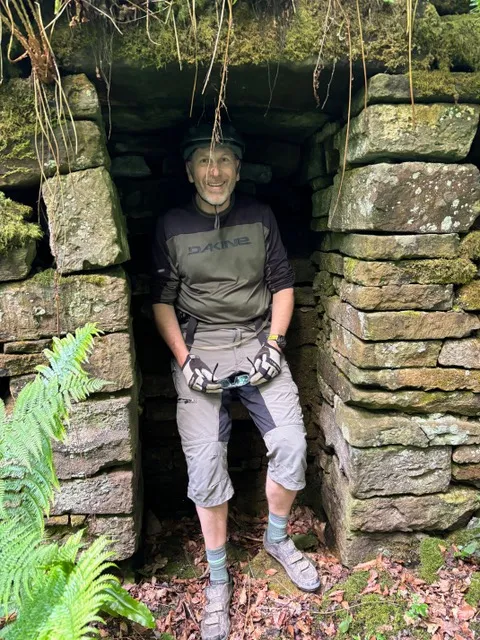
Onwards to area three, Acorn Patch, a conspicuously open area in the forest. The area was first occupied by the British, and then passed to the Americans in 1942. The area became the second largest US open-air munitions storage site in the UK. A railway was present during this time, now sadly gone, and trains would have been constantly coming and going with their freight. Now all that is left is the general footprint of the railway tracks, and the idea that it would have been a busy logistics hub.
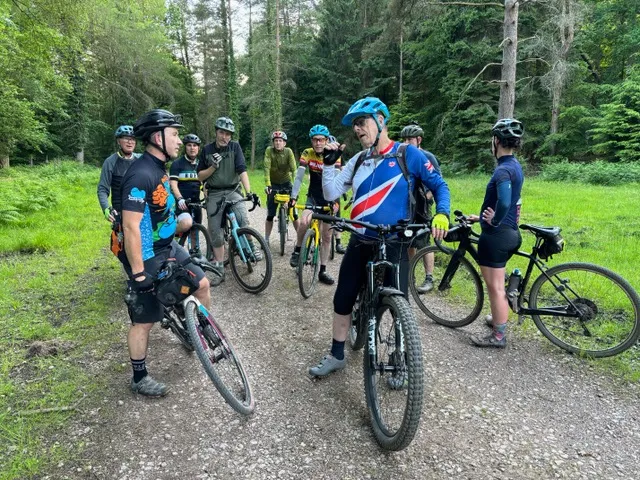
John Lewis then led us to the remains of a refueling building, now only partially visible under a twisted mess of plants and bushes. The brick building can easily be missed as you pass by on the forest road, however the eastern fence line of the new beaver enclosure at Perry Hay makes it easier to locate.
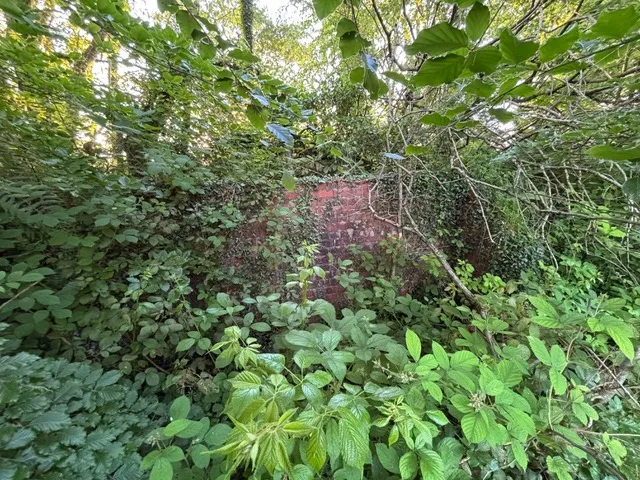
And so to our final destination, the Moseley Green tunnel site. Just off the Yorkley road, an air shaft structure constructed of local sandstone, which is in very good condition and is easily visible behind the bracken from the road. We were told that at one time an anti-aircraft gun was grafted on top of the shaft. The sight of the gun would have been a strange reminder for locals that war had reached its grim arms out to the forest.
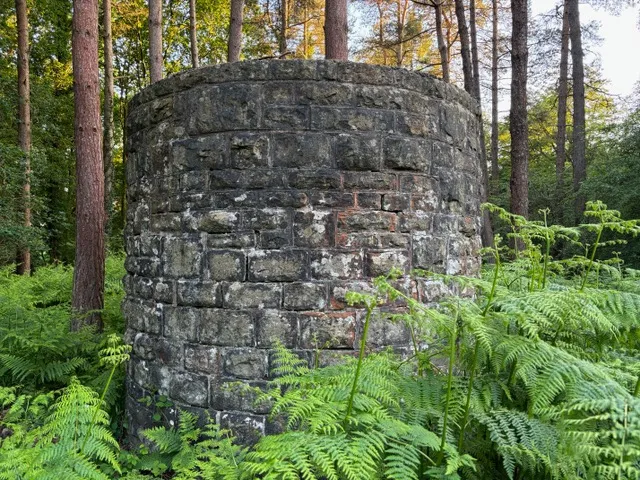
Time had come to end the ride and retreat to the Fountain in Parkend, when to our surprise a musette was unpacked and wartime items retrieved from the forest were available to be inspected. On display were lead security seals for transport cases, spent shells from a .50 caliber rifle and a German Luger, information plates for smokeless powder propellant, an air vent from a British gas mask, hand grenade tops, and a personal item a which was a button from an American GI’s uniform.
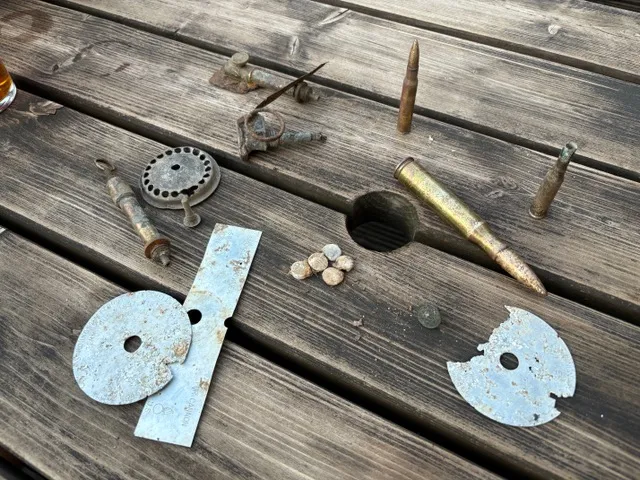
What a successful tour and put together in only a few days which shows how much there is in the forest to discover. More wartime rides will occur in future, and others have suggested similar mining, geology, human history, and natural history focussed rides too. Come and discover the many aspects of the forest with us, you won’t regret it! Get in touch using the contact page.